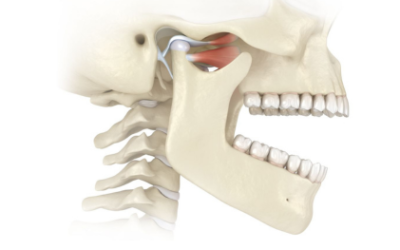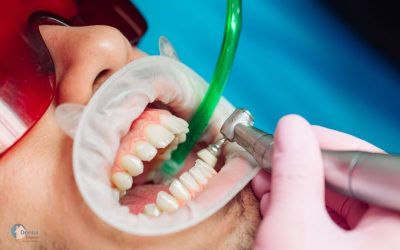Jaw alignment problems, also known as malocclusion or temporomandibular joint (TMJ) disorders, refer to any irregularity in the way the upper and lower jaws fit together. Proper jaw alignment is essential for everyday functions such as chewing, speaking, and even breathing. When the jaws do not align properly, it can cause discomfort, pain, and functional difficulties that affect quality of life.
What is Jaw Alignment?
The jaw consists of two main bones: the maxilla (upper jaw) and the mandible (lower jaw). When these two jaws come together, the teeth should fit comfortably and evenly. Proper jaw alignment allows the teeth to meet in a way that evenly distributes pressure during biting and chewing. Jaw alignment also involves the temporomandibular joints (TMJs), which are the hinge joints connecting the jawbone to the skull. These joints enable smooth movement of the jaw for talking, eating, and yawning.
Types of Jaw Alignment Problems
- Overbite: This occurs when the upper front teeth significantly overlap the lower front teeth vertically.
- Underbite: When the lower teeth extend beyond the upper teeth, causing the lower jaw to protrude forward.
- Crossbite: When some upper teeth sit inside the lower teeth rather than outside when biting down.
- Open bite: When the front teeth do not touch when the mouth is closed, leaving a gap.
- Misaligned midline: When the center lines of the upper and lower teeth don’t line up properly.
- TMJ Disorders: Problems in the temporomandibular joints causing pain and dysfunction in jaw movement.

Causes of Jaw Alignment Problems
Jaw alignment issues can arise due to a variety of reasons:
- Genetics: Some people inherit jaw size or shape differences that cause misalignment.
- Childhood habits: Prolonged thumb sucking, pacifier use, or tongue thrusting can affect jaw development.
- Injury: Trauma or fractures to the jaw can alter alignment.
- Dental issues: Early loss of baby teeth or improper eruption of adult teeth can disrupt alignment.
- Medical conditions: Conditions like arthritis or tumors affecting the TMJ can cause jaw problems.
- Developmental anomalies: Some people have congenital jaw deformities affecting alignment.
Symptoms of Jaw Alignment Problems
Jaw misalignment can manifest through various symptoms that may worsen over time:
- Difficulty biting, chewing, or speaking clearly.
- Pain or tenderness in the jaw, face, neck, or around the ears.
- Clicking, popping, or grinding sounds when opening or closing the mouth.
- Frequent headaches or migraines.
- Limited jaw movement or locking of the jaw.
- Uneven wear or chipping of teeth.
- Changes in facial appearance, such as an asymmetrical smile or jawline.
- Tooth sensitivity due to uneven pressure.
Diagnosis
Dentists or orthodontists diagnose jaw alignment problems through clinical examination, medical history review, and imaging tests such as X-rays, CT scans, or MRI. They assess the bite relationship, jaw movement, and TMJ function to determine the severity of the condition.
Treatment Options
Treatment depends on the severity and type of jaw alignment issue, as well as the patient’s age and overall health. Common approaches include:
- Orthodontics: Braces, clear aligners, or other orthodontic appliances can gradually shift teeth and jaws into proper alignment.
- Occlusal adjustments: Minor reshaping of teeth to improve bite.
- Dental restorations: Crowns, bridges, or veneers to adjust tooth shape and bite.
- Jaw exercises and physical therapy: To strengthen jaw muscles and improve joint function.
- Splints or night guards: Custom-made devices worn over teeth to reduce grinding and relieve TMJ pressure.
- Medications: Pain relievers, anti-inflammatory drugs, or muscle relaxants for symptom relief.
- Surgery: In severe cases, corrective jaw surgery (orthognathic surgery) may be necessary to realign the jaw bones.
- Behavioral changes: Addressing habits like teeth grinding or clenching through stress management or habit-breaking techniques.
Complications if Left Untreated
Ignoring jaw alignment problems can lead to worsening pain, chronic TMJ disorders, premature tooth wear, gum disease, and difficulty eating or speaking. It may also affect sleep quality due to associated breathing problems like sleep apnea.
Prevention Tips
While some jaw alignment issues are genetic and unavoidable, maintaining good oral habits can help prevent some problems:
- Avoid prolonged thumb sucking or pacifier use in children.
- Seek early orthodontic evaluation for bite issues.
- Use proper techniques to prevent teeth grinding, especially during stress.
- Protect the jaw during sports with appropriate mouthguards.
- Maintain good posture and avoid excessive jaw strain.
Jaw alignment problems can significantly impact oral health and daily functioning. Early diagnosis and appropriate treatment are key to managing symptoms and restoring proper jaw function. Consulting a dental professional if you notice any signs of jaw misalignment or discomfort is always recommended to prevent complications and improve quality of life.




